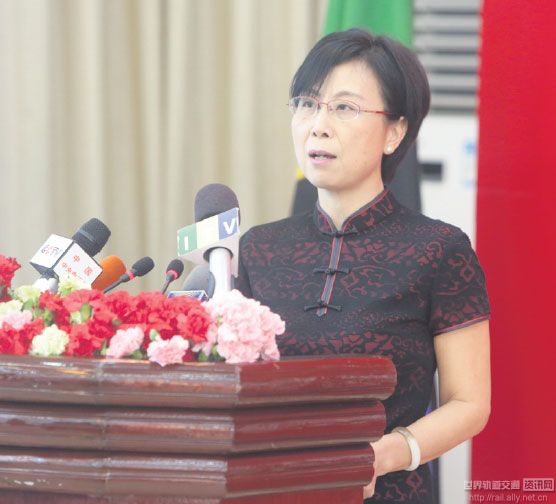Railway on track for revival
2017-11-27 14:36:14African nations hope Chinese financing can turn around the fortunes of rundown international line
China has expressed its readiness to provide financial support to revitalize the Tanzania-Zambia railway, which needs a $1.2 billion face-lift.
The newly appointed Chinese ambassador to Tanzania, Wang Ke, says the two countries have already started talks on how to revive the line.
"My embassy has initiated talks between China and the governments of Tanzania and Zambia, and so far the response is very positive. China is ready and willing to provide funding for the railway," says Wang.
Justa Nyange, acting director for Asia and Australia at Tanzania's Ministry of Foreign Affairs, says the current financial situation in the two African countries does not allow them to revamp the railway themselves, so it is good news that China has offered to finance the project.
In September, the Zambian government said the Tanzania Zambia Railway Authority - known as TAZARA - needed investment of $1.2 billion over the next five years to turn the route into a profitable commercial enterprise. Extra capacity is needed to reduce transportation costs on the line, which currently has the capacity to haul 600,000 metric tons a year, but could carry 2 million tons with the anticipated investment.
It is expected to carry 381,000 tons of freight and 2.28 million passengers, for both interstate and commuter travel, in the current financial year, generating revenue of around $44 million.
Beijing is considered the most likely investor. Talks have been held in recent years, but no agreement on large-scale financing has been reached, although China did provide $40 million at the start of 2016 as working capital.
The authority needs around $271 million in the short to medium term to fix track and to buy or repair locomotives. Currently, TAZARA has 13 locomotives available on an average day. These are mostly General Electric locomotives, since the original Chinese locomotives having long since been retired. The total requirement for break-even is around 30 reliable locomotives, TAZARA says.
In August, TAZARA and Zambia Railways Ltd signed an open access agreement to allow the seamless movement of freight trains across each other's railway infrastructure, with the aim of eliminating inefficiencies and passing on the benefits to railway users on the Dar es Salaam Corridor.
In the first year of open access operations, TAZARA expects it will gain an additional 200,000 tons of freight, compared with the 170,000 tons moved in the past fiscal year.
That means TAZARA can run all the way to Lusaka, Livingstone or Ndola in Zambia, while ZRL can run to Dar es Salaam, Tanzania.
Zambia Railway Ltd CEO Chris Musonda says that, according to key performance indicators, the 2014-15 fiscal year, when the railway transported just 87,000 tons, was the worst in its history. However, the situation has improved over the past two years, with more than 130,000 tons transported in fiscal year 2015-16 and 170,000 tons in fiscal 2016-17.
"Now we are targeting 350,000 tons in the 2017-18 fiscal year, which is an improvement of more than 100 percent compared with fiscal year 2016-17. Of course, we are still far short of the break-even level, or reaching satisfactory levels, but we are delighted to have made a turn for the better. It is important to appreciate that we are now on a profound recovery trajectory," Musonda says.
TAZARA was built in the 1970s by the Chinese government, with Chinese financing and workers. It was developed to give Zambia a means of exporting its copper via the Port of Dar es Salaam, without moving it through apartheid-era South Africa. It still carries Zambian copper, but a lack of investment over many years has restricted revenue. The signaling and telecommunications systems, which have been vandalized over the years, are described by the company as "currently nonexistent.
TAZARA has been receiving regular financial support from the Chinese government through what are known as Protocols of Economic and Technical Cooperation that were signed with Tanzania and Zambia in the form of interest-free loans.

